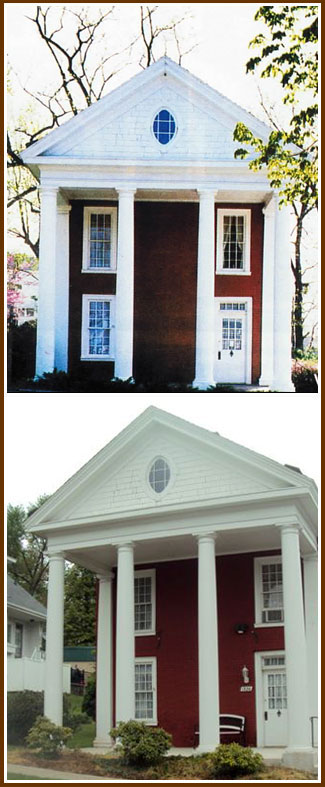| 1804 | — | land purchase — 889 acres (over 1 sq. mile) bounded on the south by 17th St. and on the west by the Scioto River and on the north by Cole’s Blvd. and running east to where Garfield School now stands — obtained by Capt. John M. Clingman, but deeded to his son-in-law Aaron Kinney |
| 1804 | — | temporary cabin built (approx. where Lincoln School is today) |
| 1810 | — | the new house is finished — front faced south — 4 large rooms (2 up and 2 down) — spiral staircase located at SE corner of central room (remnant still in upstairs master bedroom) — made hand-pressed bricks from clay dug out of the foundation excavation — walls are 4 bricks thick (14″) — timbers are hand-hewn walnut and oak logs — laths are hand-split — orginal latchstring door |
| 1812 | — | east addition completed — 2 large rooms and 2 hallways (1 up and 1 down) and a back stairway connecting the 2 hallways |
| 1823 | — | NE corner “lean-to” added as extra kitchen capacity (pump room) |
| 1913 | — | major remodeling — front door and windows cut on west side so new front door faces Waller St. — tall porch and columns added (to make the farmhouse look more like a city house) — staircase added in NW corner and wall was erected upstairs to make a small front hallway — spiral staircase removed |
| 1946 | — | last time the house was used as a residence — Isabel Kinney (grand-daughter of Aaron and Mary Kinney) was the last resident — no running water (hand pump in the lean-to kitchean plus an outhouse in the rear) — gas line fro small room heaters — electricity enough for a few light bulbs and a radio was added in 1930’s — house left empty and deterorated from lack of maintenance and vandalism |
| 1970’s | — | the SCHS has owned the house (purchased from All Saints Episcopal Church) but was not open to the public until the 1970’s — major repairs and restoration undertaken — most items in the house come from other families (not the Kinneys) — all items have been donated to us — nothing later than 1946 (except some decorative items and functional necessities) — nobody lives here — all workers and guides are volunteers |


